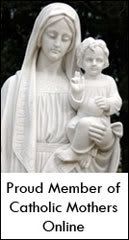 The South Transept of this royal church (originally a Benedictine monastery) has long been referred to as Poets' Corner where graves, markers, and memorial plaques are placed for writers such as: Chaucer (the first one), Shakespeare, Milton, Brontë sisters, Dickens, Keats, Tennyson, Browning, and that famous poet Fr. Gerard Manley Hopkins. Now wedged between Betjeman and Blake, a stone for Clive Staples Lewis has been laid.
The South Transept of this royal church (originally a Benedictine monastery) has long been referred to as Poets' Corner where graves, markers, and memorial plaques are placed for writers such as: Chaucer (the first one), Shakespeare, Milton, Brontë sisters, Dickens, Keats, Tennyson, Browning, and that famous poet Fr. Gerard Manley Hopkins. Now wedged between Betjeman and Blake, a stone for Clive Staples Lewis has been laid. It was commemorated in London with a 2-day conference on apologetics, a choral evensong, and a service of Thanksgiving preached by the former Archbishop of Canterbury Rowan Williams, with one of Lewis' poems "Love's as Warm as Tears" being performed as an anthem.
It was commemorated in London with a 2-day conference on apologetics, a choral evensong, and a service of Thanksgiving preached by the former Archbishop of Canterbury Rowan Williams, with one of Lewis' poems "Love's as Warm as Tears" being performed as an anthem.The British author is known to have been an admirer of Yeats and started trying to compose verse at age 19 under the name Clive Hamilton, from his mother's maiden name. His poems were largely written in the trenches during WWI, when he was an avowed atheist. Neither volume of his poetry had any success. Nor did his unbelief last very long either. He came to Christianity through the works of authors George MacDonald, J.R.R. Tolkien, and G.K. Chesterton. He joined the Church of England in 1931, much to the dismay of Tolkien, who had hoped he would become a Catholic. Lewis first met Tolkien in 1926 and later wrote:
"Friendship with the latter marked the breakdown of two old prejudices. At my first coming into the world, I had been (implicitly) warned never to trust a Papist, and at my first coming into the English Faculty (explicitly) never to trust a philologist. Tolkien was both."
Throughout the past 50 years, C.S. Lewis has touched all believers with his orthodox writing. I find his style approachable and enjoyable, intelligent but not high-handed. He started with "Mere Christianity," and so did I. Since then I have also read:
The Four Loves
The Great Divorce
The Screwtape Letters
Surprised by Joy
Reflections on the Psalms
The Chronicles of Narnia
Speaking of which, did you know where he got the name for Narnia?
The name comes from a little town in Italy (halfway between Rome and Assisi) called Narni --or Narnia in Latin. He liked the sound of it and underlined in an atlas he acquired while reading the classics with his tutor, Mr. Kirkpatrick. Its reference comes from Pliny the Younger's letter to his mother-in-law, in which he mentions the excellence of the accomodations of her villa at Narnia, especially the beautiful baths. Undoubtedly, his education laid the foundation for producing such epic and imaginative stories later on. And his life's experiences led him to be able to authentically relate his faith in God and thus become one of the leading Christian apologists of his time.




No comments:
Post a Comment